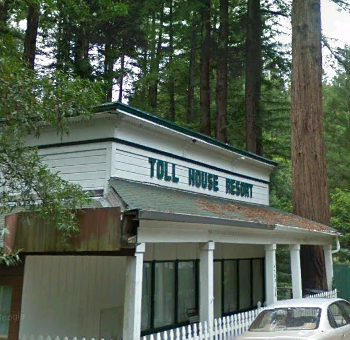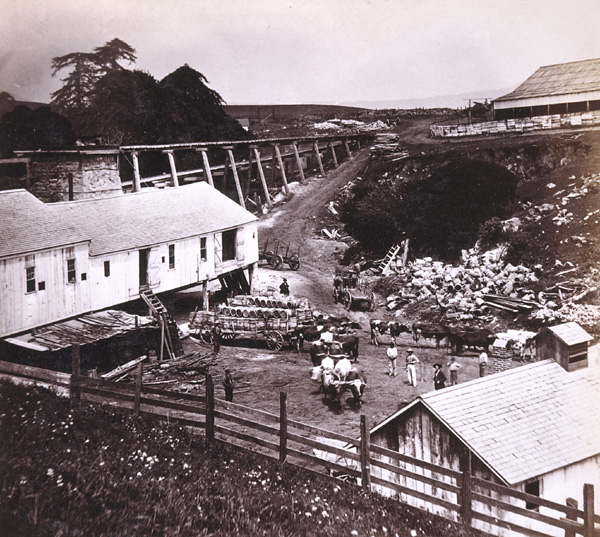History Pages: 20 - Return of the Limeburners
For a table of contents, see History pages.
The end of the Civil War in 1865 allowed California to resume its pre-war growth, augmented in Santa Cruz County by the successful and growing California Powder Company. Returning veterans resumed their jobs at the Davis & Jordan Lime Company. The Company’s success attracted competitors who found plenty of accessible limestone on land not controlled by Davis & Jordan. Small-scale lime operations were revived and expanded by a new crop of entrepreneurs arriving from the east.
To the west of present-day Felton, New York-born Eben Bennett built a few kilns and began to dig. It was Bennett who, in 1866, described his occupation as “limeburner”. It's a reference to the lime-manufacturing process, which involves heating limestone to a high temperature in a special oven called a kiln.
To get the lime to market, Bennett began construction of a new road to Santa Cruz in 1866. To pay for maintenance, it was decided that a toll would be charged. The structure built to house the toll collectors was situated just south of Felton, and still stands today at the entrance to the Toll House Resort on Highway 9. Bennett prospered and in 1870 built a very nice home that still stands at the corner of 3rd and Main Streets on Beach Hill. One creek over from Bennett, another New Yorker named Thomas Bull started a similar operation. Bennett and Bull creeks in Felton bear their names today.
Over on the other side of the ridge, former 49er Samuel Adams (probably no relation to the famous Massachusetts family) bought 200 acres to the west of the Davis & Jordan lands and began his own quarrying/lime-making operation. To avoid paying to use the Davis & Jordan wharf, Adams built a wagon road down to Russian Landing (now Wilder Beach), so named because it was on land belonging to "the Russian", Jose (Josef) Bolcoff. Adams’ road is today the main road into the upcountry of Wilder Ranch State Park. The ruins of the lime operation are still visible on what used to be known as Gray Whale Ranch, before it was added to the State Park.
In 1865, A. P. Jordan became ill and sold his share of the lime company to Henry Cowell, yet another easterner who came west and profited during the Gold Rush. Cowell immediately took on Jordan’s role as the Santa Cruz end of the new Davis and Cowell partnership, moving into Jordan’s house near the lime works (now known as Cardiff House, on the UCSC campus). The photo at left shows the limeworks as it looked in about 1866-1870. Cowell eventually came to own most of the lime manufacturing operations in Santa Cruz County, and his son S. H. (Harry) continued to live on the family ranch until his death in 1955. The S.H. Cowell Foundation sold and/or donated the land that is now the University of California Santa Cruz (UCSC). Ruins of the kilns remain and several of the limeworks buildings have been restored, located near the main campus entrance. The main lime quarry was repurposed as an outdoor amphitheater.
The S.H. Cowell Foundation sold and/or donated the land that is now the Henry Cowell Redwoods State Park. This land included the later "Rincon" Cowell lime operation just northwest (away from Santa Cruz) from where the railroad tracks cross Highway 9.
Further reading
* History Pages: 16 - Lime and Wine * Lime Kiln Legacies (2007 book)

